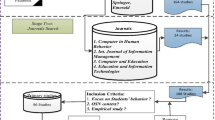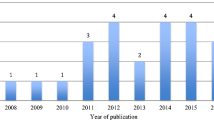Abstract
In order to improve the quality and quantity of the performance in computing in Nigeria Universities, there is need for a functioning research networking application through which they can exchange ideas. This is because academics tend to be more comfortable communicating with each other, asking questions and more importantly, such networking will provide mentorship in the Nigeria academic community. In order to make for this, several recommendations have been suggested but not scientific. Therefore to bridge this gap, this paper examines the properties of co-authorship network in Covenant University, Computer Science department. Properties of network such as centrality measures, network coefficient and so on are discovered. A collaboration recommendation application is then developed using the link prediction based on the Adamic-Adar Index measure. In conclusion, the result gotten from the network analysis is a valuable source of information for accessing the different centrality values of researchers in computer science. It also formed the foundation for developing an academic collaboration recommendation system for a small world research network. This will therefore improve the quantity and quality of performance of computer science academics in Nigeria.




Similar content being viewed by others
Data Availability
The data used for the research is available on request.
Code Availability
The code for analysing the data is available on request.
References
Mattessich, P. M. C. (2001). Collaboration: What makes it work (2nd ed.). Amherst H.Wilder Foundation.
Lewis, J. (2010). Connecting and cooperating: Social capital and public policy. UNSW Press.
Okokpujie, I., Fayomi, O., Ogbonnaya, S., & Fayomi, G. (2018). The wide margin between the academic and researcher in new age university for sustainable development. Energy Procedia, 157, 862–870.
Merlin, G. (2000). Pragmatism and self-organization. Research collaboration on the individual level. Research Policy, 29(1), 31–40.
Theresa, C. O., & Samson, O. C. (2017). Career-training mentorship intervention via the Dreyfus model: Implification for career behaviors and practical skills acquisition in vocational electronic technology. Journal of Vocational Behavior, 103, 88–105.
Ductor, L. (2014). Does co-authorship lead to higher academic productivity? Oxford Bulletin of Economics and Statistics, 77(3), 385–407.
Kima, Y., Choib, T. Y., Yanb, T., & Dooley, K. (2011). Structural investigation of supply networks: A social network analysis approach. Journal of Operations Management, 29, 194–211.
Borgatti, S. P., & Li, X. (2009). On social network analysis in a supply chain context. Journal of Supply Chain Management, 45(2), 5–21.
France, C., & Brian, J. C. (2009). A social network analysis of the co-authorship network of the pacific asia conference on information systems from 1993 to 2008. In Pacific Asia Conference on Information Systems (pp. 1–13).
Bruce Hoppe and Claire Reinelt. (2010). Social network analysis and the evaluation of leadership networks. The Leadership Quarterly, 21, 600–619.
Michael, F., & Martina, K. M. (2010). The impact of network structure on knowledge transfer: an application of social network analysis in the context of regional innovation networks. The Annals of Regional Science, 44(1), 21–38.
Manh, C. P., Yiwei, C., Ralf, K., & Matthias, J. (2011). A clustering approach for collaborative filtering recommendation using social network analysis. Journal of Universal Computer Science, 17(4), 583–604.
Alireza, A., Jorn, A., & Liaquat, H. (2011). Identifying the effects of co-authorship networks on the performance of scholars: A correlation and regression analysis of performance measures and social network analysis measures. Journal of Informetrics, 3, 594–607.
Tasleem, A., Rashid, A., & Asger, M. (2012). Scientific co-athorship social networks: A case study of computer science scenario in India. International Journal of Computer Applications, 52(12), 38–45.
Li, E. Y., Liao, C. H., & Yen, H. R. (2013). Co-authorship networks and research impact: A social capital perspective. Research Policy, 42(9), 1515–1530.
Tahereh, D., & Stefano, N. (2017). Research impact in co-authorship networks: a two-mode analysis. Journal of Informetrics, 11, 371–388.
Marion, E. H. (2017). Sport commmunication research: A social network analysis. Sport Management Review, 20, 170–183.
Jingfeng, Y., Kaiwen, C., Wei, L., Chuang, J., & Zhiru, W. (2018). Social network analysis for social risks of construction projects in high-density urban areas in China. Journal of Cleaner Production, 198, 940–961.
Yang, R. J., & Zou, P. (2014). Stakeholder associated risks and their interactions in complex green building projects: A social network model. Building of Environment, 73, 208–222.
Jose, L. O. (2014). Influence of co-authorship networks in the research impact: Ego network analyses from microsoft academic search. Journal of Informetrics, 8, 728–737.
William, R. (2006). Definitions of community. Johns Hopkins Bloomberg, School of Public Health, Johns Hopkins University.
Matthew, D. (2014). Social network analysis. Institute for Social Science Research, 1–20.
Zachary, W. W. (1977). An information flow model for conflict and fission in small groups. Journal of Anthropological Research, 33(4), 452–473.
Bonacich, P. (1972). Factoring and weighting approaches to status scores and clique identification. Journal of Mathematical Sociology, 2(1), 113–120.
Fei, G., Katarzyna, M., Colin, C., & Sophia, T. (2015). Link prediction methods and their accuracy for different social networks and network metrics. Scientific Programming. https://doi.org/10.1155/2015/172879
Funding
The authors appreciate Covenant University for sponsoring the publication of this article.
Author information
Authors and Affiliations
Corresponding author
Ethics declarations
Conflict of interest
There is no conflict of interest that is known to the authors.
Additional information
Publisher's Note
Springer Nature remains neutral with regard to jurisdictional claims in published maps and institutional affiliations.
Rights and permissions
About this article
Cite this article
Afolabi, I.T., Ayo, A. & Odetunmibi, O.A. Academic Collaboration Recommendation for Computer Science Researchers Using Social Network Analysis. Wireless Pers Commun 121, 487–501 (2021). https://doi.org/10.1007/s11277-021-08646-2
Accepted:
Published:
Issue Date:
DOI: https://doi.org/10.1007/s11277-021-08646-2




